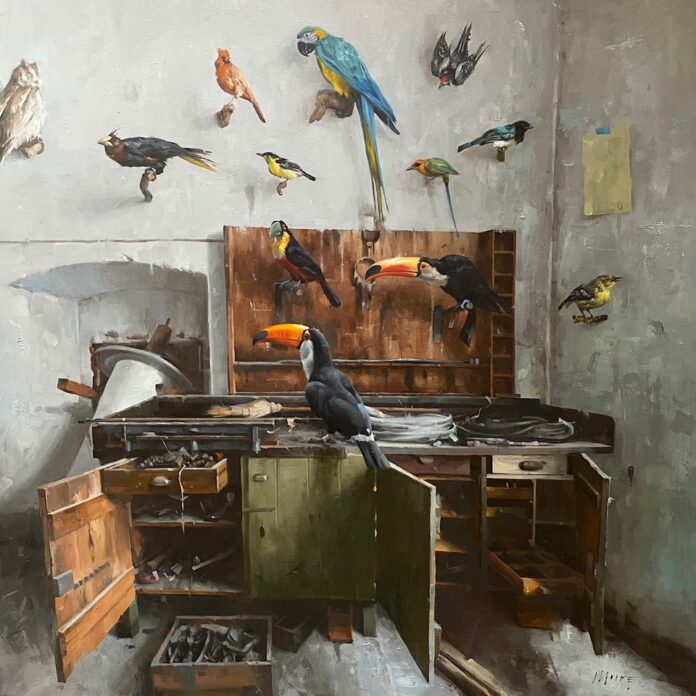
On Contemporary Realism >
The Necessity of Story
By Larry Moore
Professional artist and author of “Fishing for Elephants: Insights and Exercises to Inspire Authentic Creativity”
I’ve spent a good bit of time breaking down the components of painting to become more thoughtful about my work and to help others do the same.
One of the first considerations in any creative endeavor is the intent or driving concept behind the work, with narrative/story next in importance. Yes, drawing, color, shape, and all of the aspects of the craft are critical for the representational painter, just as prowess in any craft is, but once that skill set is acquired you have to do something with it.
Every song has a narrative, every movie a storyline, every poem a scenario, each novel a plot, and every picture tells a story. Why should a painting be any different? The intangible thing that separates the greats from the “pretty goods” is rooted in a deep pool of ethos that is mixed into every puddle of color and directs every movement of the brush. It’s the foundational idea of a piece that sets the tone for a compelling outcome.
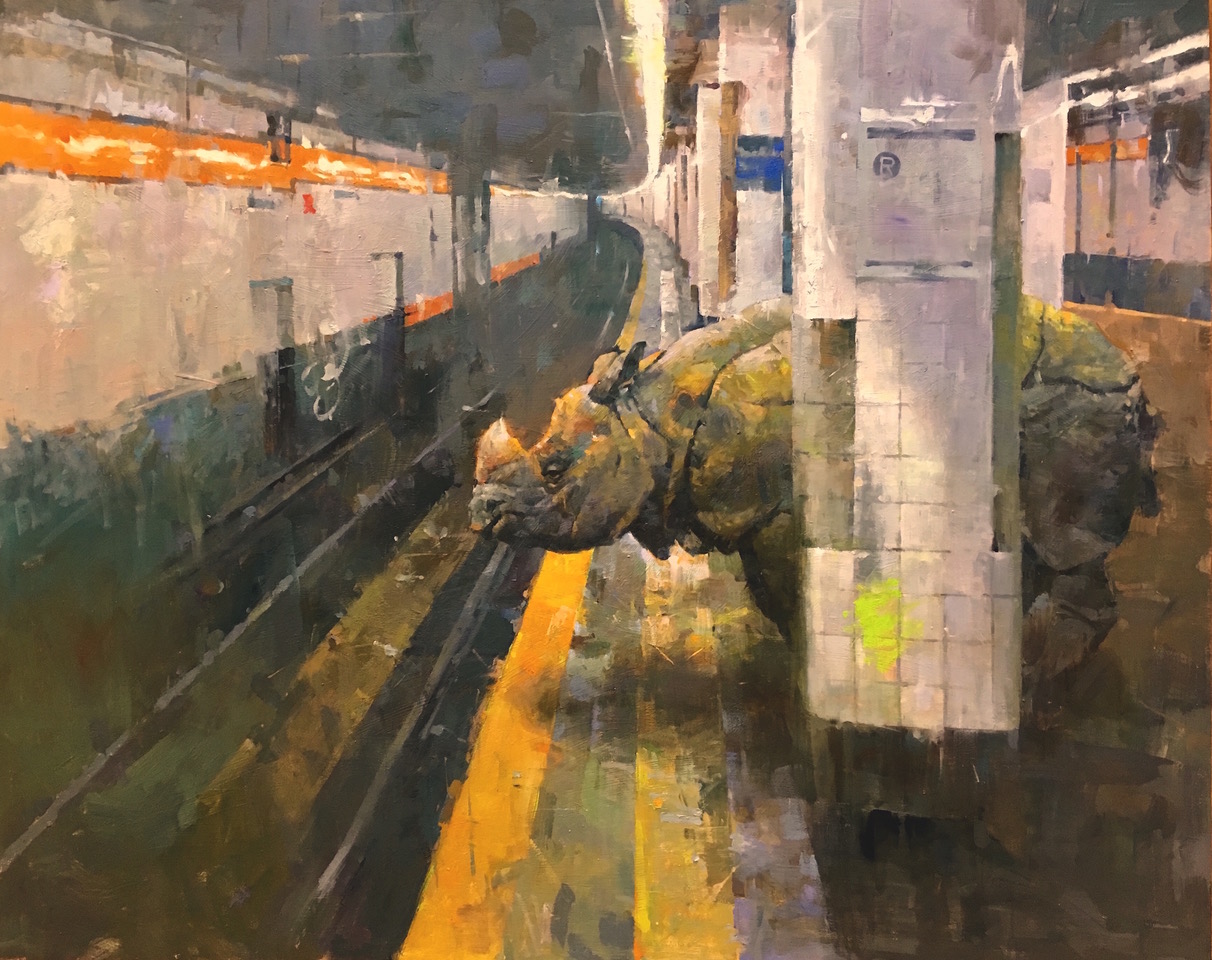
I had read an article on the fate of the Indian Rhino, whose numbers were down to 300 in the wild due to hunting; they were on their way out. Thankfully, a group of conservationists got involved before it was too late and raised their numbers up considerably.
To see great narrative in action, a browser search of “golden era illustration” will give you a balcony seat view of some of the greatest visual storytellers of the last century; Mead Schaeffer, Howard Pyle, N.C. Wyeth, Dean Cornwell, Jessie Willcox Smith, the list is incredibly long. This, one of the most prolific movements in the narrative arts, housed the masters of story, design, style, and ability.
One of the tricks (beyond a strong design) to creating a powerful narrative in a painting is to think like a movie director. After all, a painting is a single-frame movie that speaks to a moment in time, but the outstanding ones hint at the preceding events and those that are yet to come. If you incorporate a figure or figures in your work, you should know them as a writer knows his/her characters. What are they thinking? What is their backstory? Why are they there? What do their expressions, posture, and the placement of their hands, say about them?
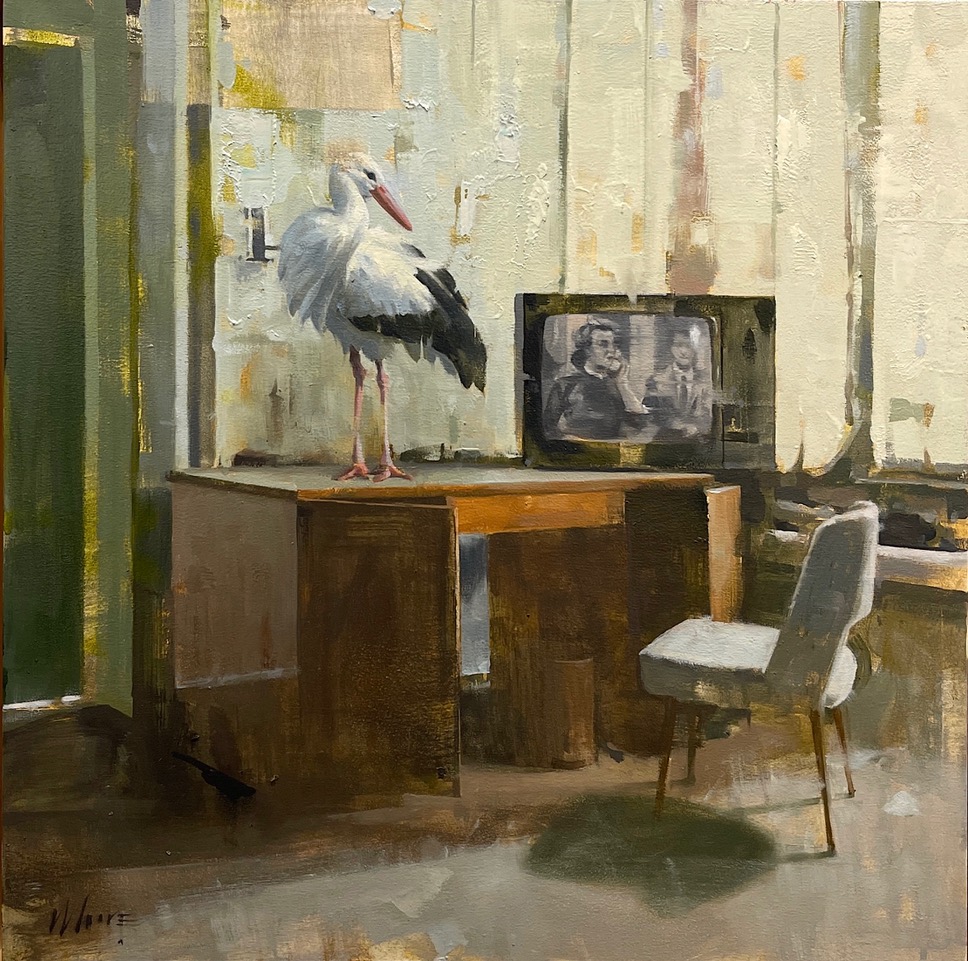
Go through a top 100 ranked movie frame by frame, Citizen Kane or The Grand Budapest Hotel come to mind, and look at the construction of each scene. What symbolism does it hold? How is it designed? What are they up to and what’s coming next? If you think coming up with a great design for a painting is hard, there are approximately 172,800 frames in a 2-hour movie. And they all have to look good.
I appreciate the skill in a great portrait or a well-executed figurative piece but as a viewer, I want more. If you’re going to paint a beautiful female nude languishing on a sun-drenched bed, put an easter egg in there to give the discerning eye something to think about, something that hints at events beyond the boundaries of the frame. Viewers want to be included; let them fill in some of the script. Think like a writer, give them enough but leave room for the imagination. Tap into your deep recesses and tell your story. Write (or paint) what you know.
A painting doesn’t have to contain pirates or a well-heeled couple in high society to communicate a message. Even a simple still life should hint at a plotline. Who put the stuff on the table? What are the flowers feeling? What’s the relationship between the asparagus and the knife and who drank half the beer placed at a calculated distance from that nibbled on bread?
The space between objects is like a pregnant pause in a conversation. It adds to a compelling plot even if the characters in the play are just vegetables and dinnerware. Assign human characteristics to every piece in your static production. Use people you know as character reference for a more compelling life-filled still life.
If it’s a landscape, there’s always a story buried in the land. What is it about this place that is important? Who lived there? Or died there? What would a pioneer have felt having seen this place for the first time? What would Thoreau say about this land? How does it feel on your skin? What memory does it spark? What is the message you want to convey about that bustling street scene? Even if it just stays in your head while you are painting, it may not be readily evident, but viewers will feel it.
How does the subject make you feel? Take 10 minutes before you lay brush to canvas to write about your sense of place and you’ll have a deeper understanding of what you are saying about the subject because you have defined it for yourself. Your palette, brushwork, drawing, design, and style all go to the story. Every mark and movement should be in support of the narrative.
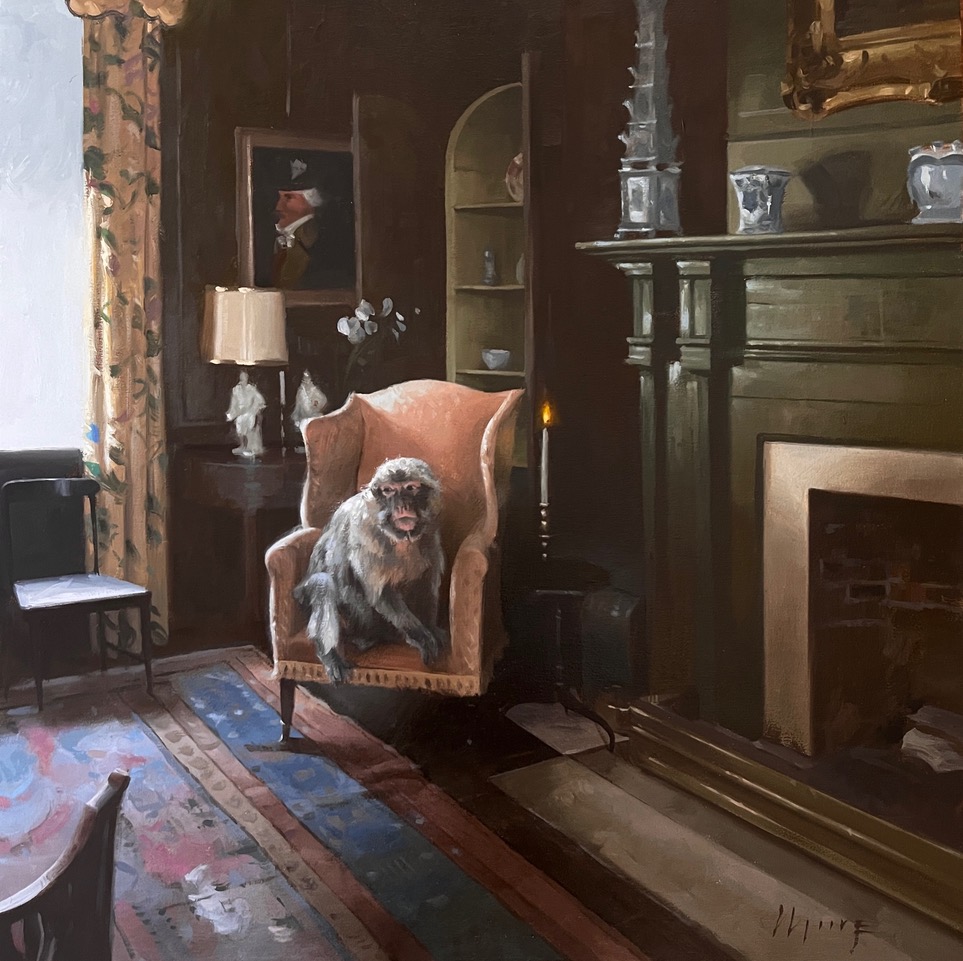
Once in a while, I just do things that I find amusing. Thankfully people often get my humor.
I build every painting around a story, whether abstract or representational. For my narrative work, I landed on a theme of animals in abandoned spaces. The work has a subtle environmental statement of man versus nature, and for each piece, there is a specific plot. Sometimes the story is written before I begin and often they represent specific events from my life. Each painting is like a page in a diary, a place to work out specific problems. If others get the idea, all the better. And if they don’t, the story I’ve created for each piece drives every decision I make.
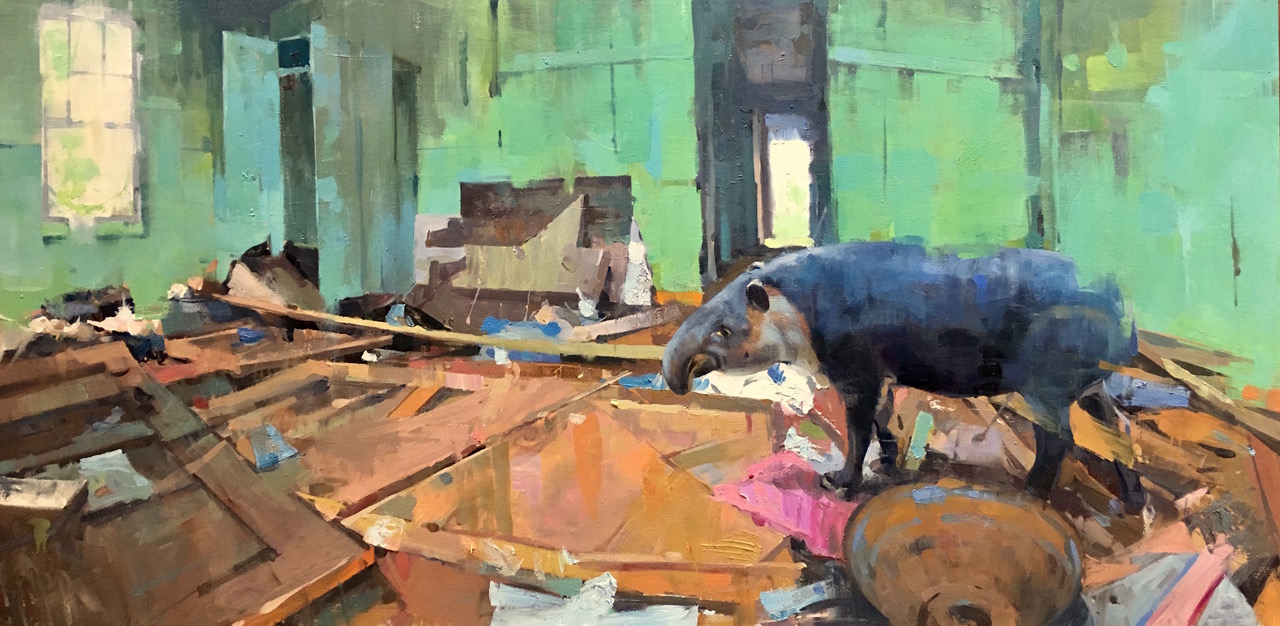
For the most part, this series deals with our one-sided relationship with wildlife. Occasionally though I would use stories from my own life. This piece dealt with a time that I was deeply anxiety-ridden and surrounded by chaos. Of course, I didn’t really tell the buyers that.
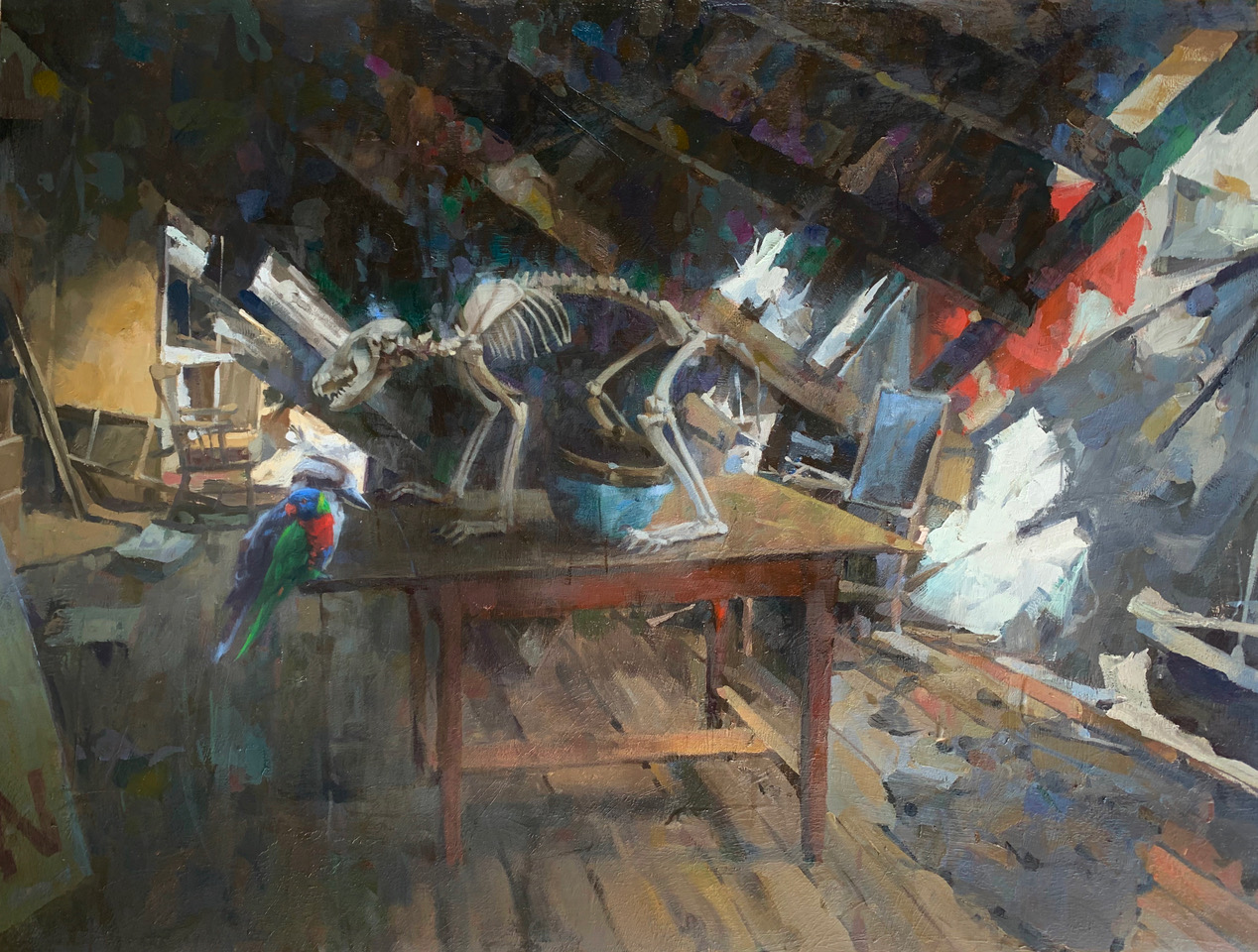
Recently, in one year, I lost three of my best buddies from grade school to addiction. We were close then but, as it turned out, took very different paths.
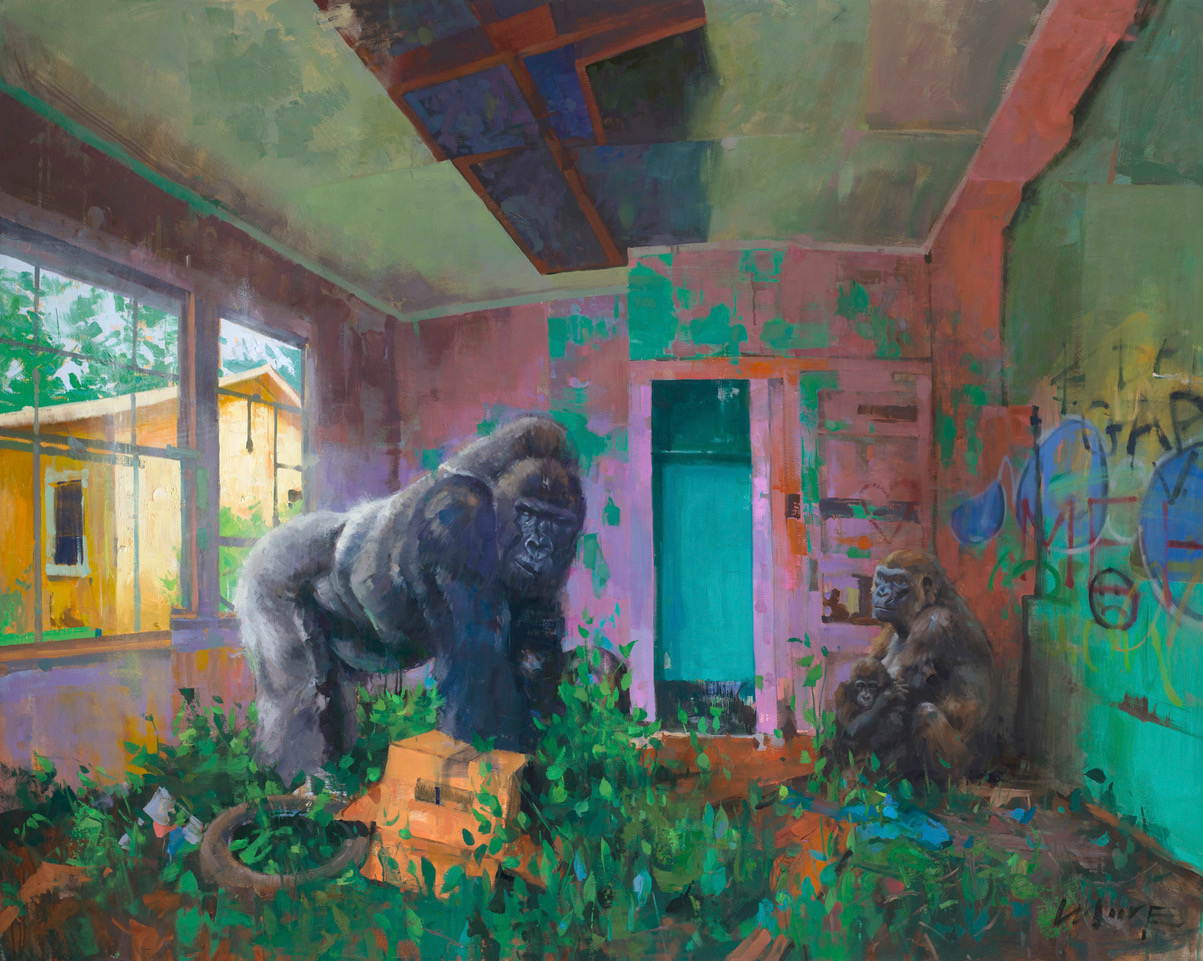
We share 96% of our DNA with our primate cousins and many social traits. We are pretty much hairless apes with mortgages and credit card debt.
Art is self-expression and our personal stories make us who we are. As Wassily Kandinsky said, “In each picture is a whole lifetime imprisoned, a whole lifetime of fears, doubts, hopes, and joys.” Let your story inform your work.
Connect with the artist at larrymoorestudios.com.
***
Become a Realism Today Ambassador for the chance to see your work featured in our newsletter, on our social media, and on this site.




